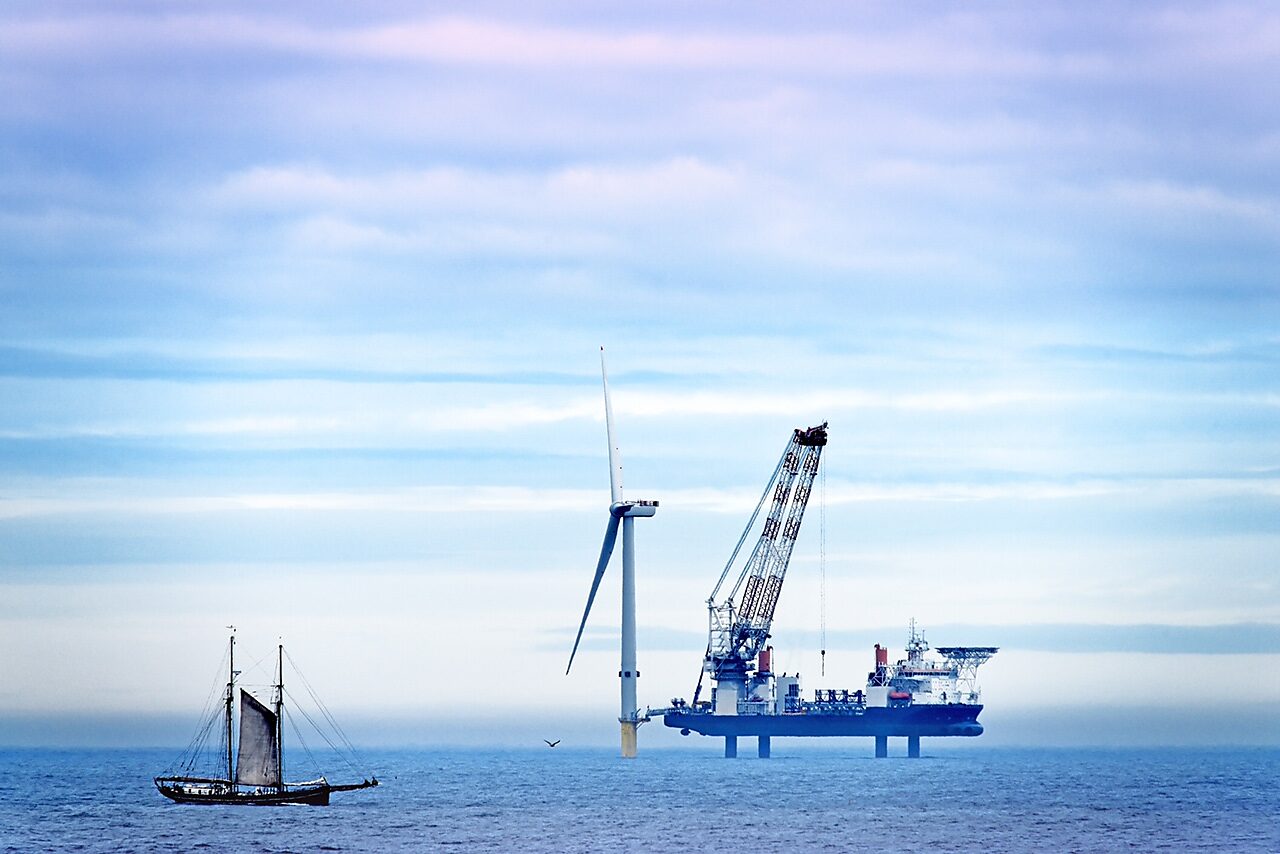Amidst mounting pressure to mitigate climate change, one source of energy receiving increased attention in the United States is offshore wind. Having already experienced considerable growth in Europe (albeit with considerable amounts of government largesse), industry backers claim it is now poised for takeoff in this country. Standing in the way of that vision, however, are a number of government-imposed obstacles, perhaps foremost of which is the Jones Act.
Passed in 1920, the Jones Act restricts waterborne transportation between two U.S. points to vessels that are U.S.-built, U.S.-flagged and mostly owned and crewed by Americans. Not surprisingly, this has major implications for the offshore wind industry.
To build offshore wind farms most efficiently requires the use of specially designed ships called wind turbine installation vessels (WTIVs). Ideally, a WTIV would load wind turbine parts in a U.S. port (i.e. a U.S. point) and then transport them to an offshore location (another U.S. point) for installation. But there’s just one problem: no such Jones Act-compliant vessels exist. Of the world’s fifteen WTIVs, none meet any of the law’s requirements.
Constructing such a vessel to comply with the Jones Act is anything but straightforward. First a U.S. shipyard with the available capacity must be found to build it. With the largest U.S. commercial shipyards busy filling government contracts, that’s no easy task. After an available shipyard is found, construction of the WTIV is sure to cost a pretty penny. According to a study prepared for the Department of Energy (DoE), building such a vessel in a protected, inefficient U.S. shipyard will cost 60 to 200 percent more than in Asia.
For perspective, a WTIV ordered by Japanese firm Shimizu last year to handle the latest generation of offshore wind turbines has a reported price tag of $465 million. Increasing that amount by 60–200 percent would mean hundreds of millions of dollars in extra costs, with a conceivable final price tag of over $1 billion.
For a single vessel.
Fortunately, workarounds do exist. But they come at the price of reduced efficiency. To construct the Block Island Wind Farm (one of only two offshore wind farms in the United States), the project used a foreign WTIV, the Brave Tern, which remained offshore while the needed wind turbine parts were transported to it from a nearby port using Jones Act-compliant vessels. But using more vessels means added cost and complications, including the risk of damaging turbine parts as they are transferred at sea from the transport vessel to the WTIV.
An even more extreme approach was used by a small-scale offshore wind project built off the coast of Virginia Beach earlier this year. The WTIV used for the project, the Luxembourg-flagged Vole au vent, loaded wind turbine parts in the Canadian port of Halifax, Nova Scotia and then sailed to Virginia, thus making it an international voyage not subject to the Jones Act. After it had exhausted its supply of turbine parts, the ship was forced to make a second trip back to Halifax to obtain additional components before sailing yet again to Virginia to complete the installation.
All that time at sea sailing back and forth means higher costs. These specialized, highly sought after vessels command charter rates that can exceed $200,000 per day.
But the cost of U.S. maritime protectionism goes far beyond a lack of Jones Act-compliant WTIVs. Building and maintaining offshore wind farms requires not just installation ships, but a whole range of specialized vessels subject to the Jones Act and related laws. Service operation vessels (SOVs) that house skilled technicians to service the wind turbines, for example, are subject to the Passenger Vessel Services Act of 1886 (PVSA). Like its cousin the Jones Act, the PVSA requires the use of U.S.-built vessels. According to industry observers, constructing these SOVs in U.S. shipyards will be at least 80 percent more expensive than building the vessels overseas, with an estimated price tag of $80 million. Smaller crew transfer vessels have been estimated to be 20 percent more expensive as a result of U.S.-build requirements.
It all adds up. According to the aforementioned DoE study, just the extra expense of building a WTIV in a U.S. shipyard to comply with the Jones Act is likely to add an extra $20–40 million per 100 turbines installed. Others say U.S. maritime protectionist laws will result in prices up to 50 percent more per kilowatt-hour than in Europe. For those interested in expanding wind energy in the United States, this is a major impediment to its success.
As offshore wind attracts increased attention there has been no shortage of politicians on both the federal and state levels eager to shower it with taxpayer dollars. They should instead focus their efforts on removing measures that hinder its growth. Repealing or reforming the Jones Act and PVSA would be an excellent starting point.

